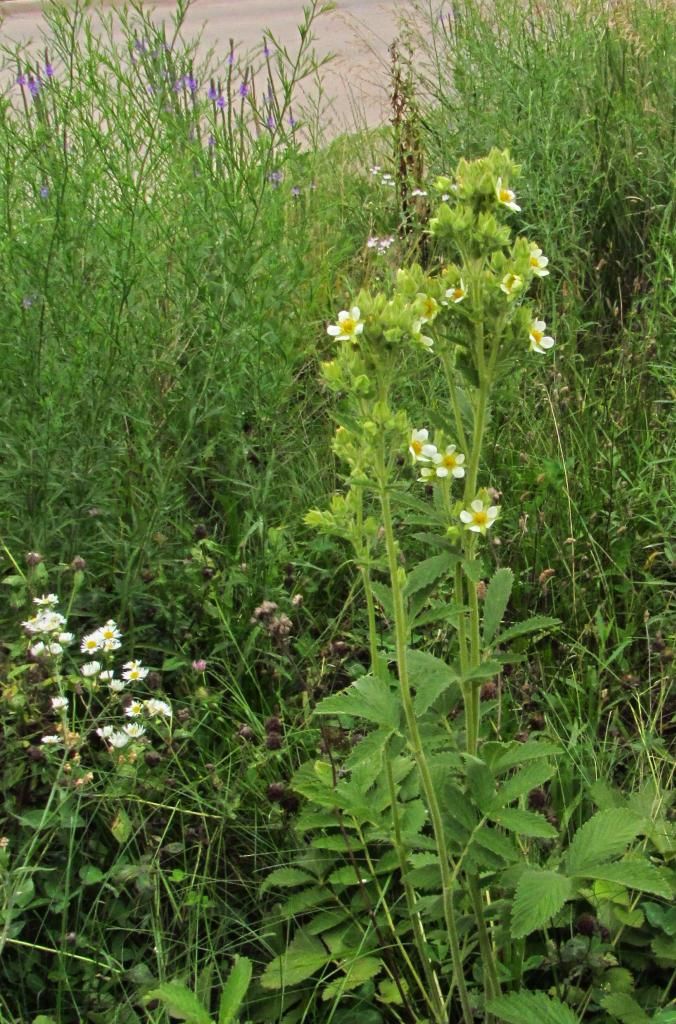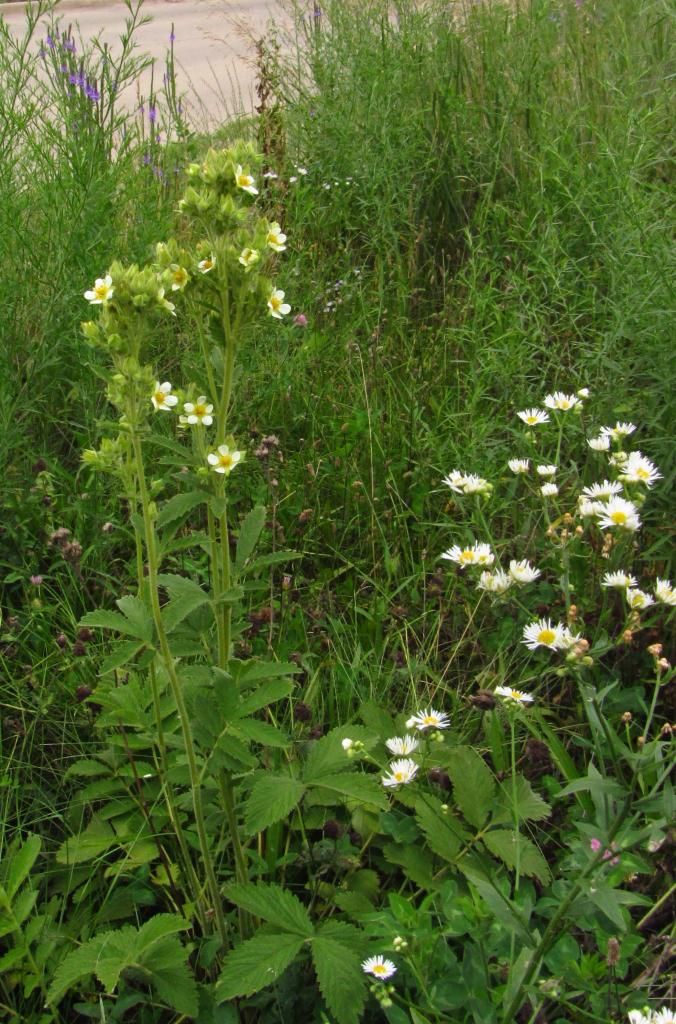Today’s featured plant is native to most of North America and can thrive in a wide variety of soils and habitats. After the jump I’ve posted several pictures of tall cinquefoil (Potentilla arguta), a member of the rose family also known as white cinquefoil or prairie cinquefoil.
This post also serves as a mid-week open thread: all topics welcome.
The Lady Bird Johnson Wildflower Center notes of tall cinquefoil, “Stout, erect stems, from 2-3 ft. tall, together with the tufted, basal, pinnate leaves, are generally sticky-hairy.” The Minnesota Wildflowers site describes the blossoms as follows:
Flowers are in tightly packed clusters of 2 to 6 flowers at the top of the plant. Individual flowers are ½ to ¾ inches across with 5 white to creamy colored petals, 5 sharply pointed green sepals about as long as the petals, and about 20 golden yellow stamens surrounding a golden yellow center. One plant has 1 to several clusters. Typically only a few flowers are open at a time.
In Iowa, this plant usually blooms in June and July. I recently came across some of these, along with many other native species, in between the bike trail and road running along the north edge of Gray’s Lake in Des Moines.
You can see flowers in various stages of opening here. The pink flowers to the left are red clover, a plant of European origin that has become widespread in North America. A small patch of daisy fleabane, a native plant, is blooming toward the right side of the photo.
The Illinois Wildflowers website has tips for gardeners:
The preference is full sun and mesic to dry conditions. This plant is not particular about soil type, as long as the site is well-drained. In native habitats, it’s often found in soil that contains some clay, rocky material, or sand. Drought tolerance is excellent, and foliar disease is rarely observed. This plant is easy to grow if the above requirements are met.
Sylvan Runkel and Dean Roosa write in Wildflowers of the Tallgrass Prairie,
The Ojibwa powdered the root of this species, put the dry or moistened powder on duck down, and applied the down to a wound to control bleeding.
In this shot, you can see daisy fleabane to the left of the tall cinquefoil. The purple flowers blooming farther off are hoary vervain, a native plant commonly seen along Iowa roadsides during the summer.
Here’s more daisy fleabane to the right of the cinquefoil.
Incidentally, tall cinquefoil looks a bit like a European native called sulphur cinquefoil (Potentilla recta).





